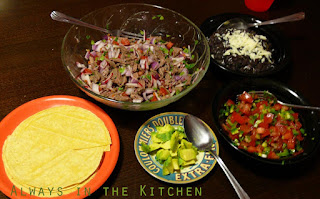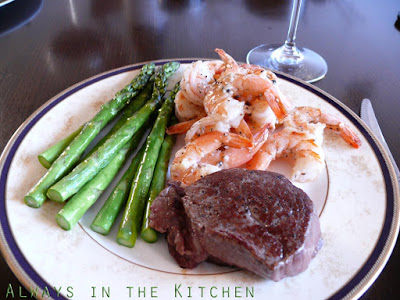
If there's one thing that the chilly autumn weather and the battling of health issues have in common, it's that comfort food makes them recede a little into the background, leaving instead (if only temporarily) a swathe of warm, well-fed well being.
It's a little funny to me that this dish, Chili Mac, is a comfort food for me, because it is something that I never had growing up. However, we did have a lot of chili, and if this had occurred to my mother as an option, I'm certain she would have made it, and often, at that.
The type of chili necessary for this dish is the uber-basic ground meat and bean style chili, which can be made very quickly and without much fuss. My standard, go to recipe is called "20 Minute Chili" because it is really that quick to knock together, and while chili is always better the next day, it's pretty good as is, shored up with lots of spices. This kind of thick chili can be made from simple pantry/freezer staples, and it freezes most excellently itself, ready to be hauled out and used for anything from Chili Mac to chili dogs, or even as a filling for a fluffy omelette!
Assuming that one has the chili already in the freezer, Chili Mac is dead easy to make (even for someone whose hands don't always work very well). The meat, onions and peppers, and other things that require knife-wielding have, for the most part, already been done, and it becomes a simple skillet dinner of patience and stirring (topped with a little cheese, and maybe some green onion and/or cilantro).
You can use your own favourite ground-meat chili here. Heck, you could even use your own favourite vegetarian chili. It's very adaptable. It uses the absorption method, so you only mess up one pot, which is also good. It's sort of like making a risotto out of pasta, only much less fussy.
Chili Mac
3 cups prepared chili (defrosted)
1 cup uncooked elbow macaroni
2 1/2 cups low-sodium beef broth (or water)
1 cup tomato sauce
Optional garnishes:
Grated cheese
Sliced green onion
Chopped cilantro
Extra hot sauce
In a 12" non-stick skillet with high sides, heat up the chili until bubbly. Add the uncooked macaroni, the broth (or water) and the tomato sauce, and bring up to a boil. Reduce heat to a simmer, and cook and stir intermittently for about 10 minutes, or until the macaroni is cooked to your liking. The liquid should be mostly absorbed, but the dish should still be a little saucy. If your heat was too high, and your liquid evaporated to quickly, you may need to add a little more water (or, for example, if you like your macaroni well-cooked instead of al dente).
Dish up and garnish as you see fit. If there are any leftovers, they warm up nicely for lunch the following day.






































